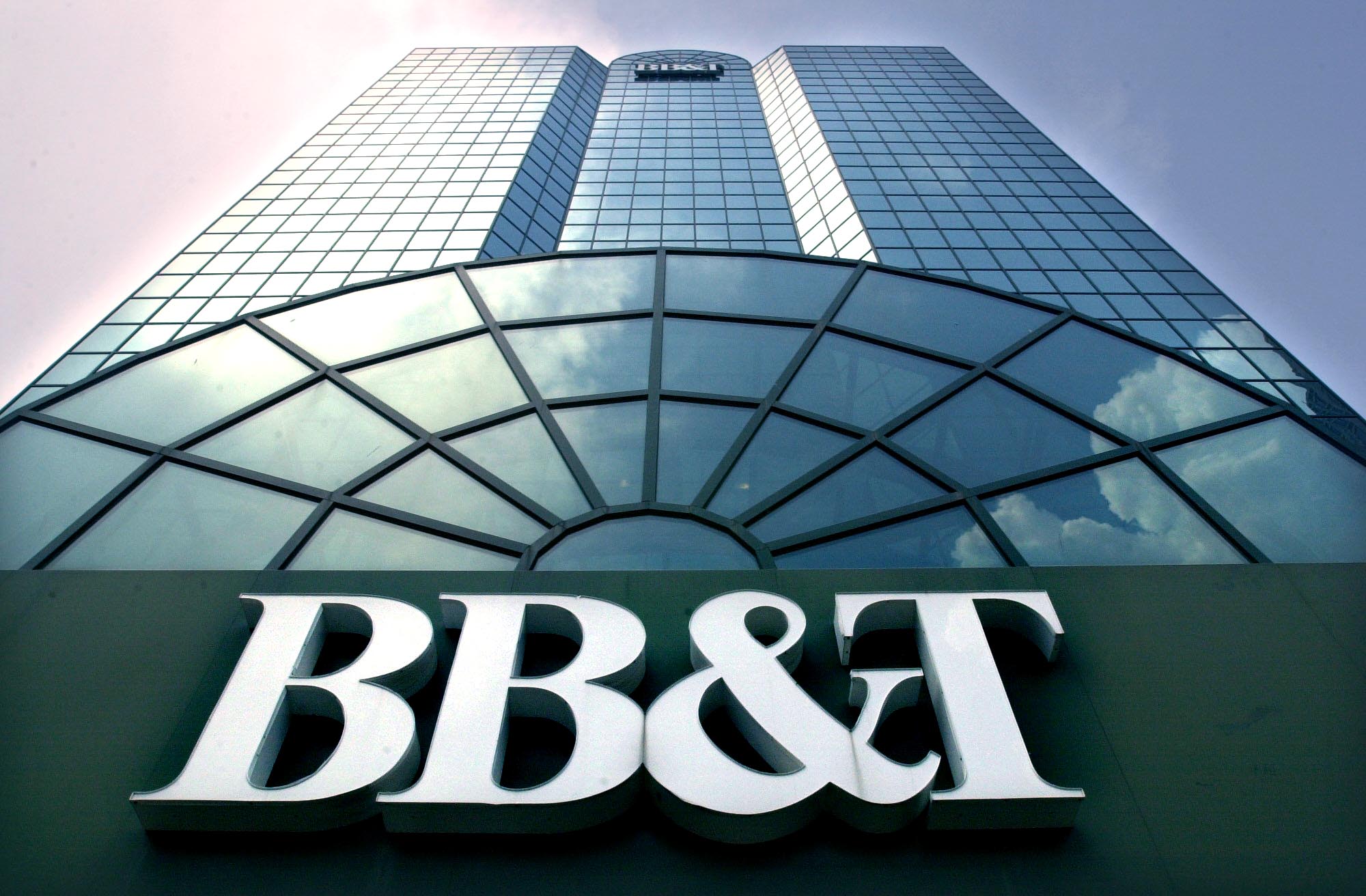BB&T expands with bank acquisition
BB&T, the Winston-Salem, N.C.-based banking company that operates both banks and insurance offices in Chattanooga nad Dalton, Ga., is buying Susquehanna Bancshares in a deal that will broaden the bank's reach into the Mid-Atlantic region.
News of the deal, which is worth $2.5 billion in cash and stock, sent Susquehanna's stock price soaring. Based on Susquehanna's closing price Tuesday, BB&T is paying a 39 percent premium.
BB&T has been expanding recently, and the deal announced Wednesday is one of the largest deals in the banking sector since the financial crisis. Susquehanna has assets of approximately $18.6 billion, compared with $187 billion for BB&T.
The bank will create three new banking regions that oversee markets in New Jersey and Pennsylvania, while the Baltimore region will be brought into the areas Susquehanna operates.
Susquehanna has 245 locations in Pennsylvania, Maryland, New Jersey, and West Virginia.
BB&T will take a pre-tax merger and integration charge of $250 million, but expects $160 million in annual savings.
The deal has been approved by the boards of both companies, but still requires a nod from Susquehanna shareholders and regulators.
J.C. Penney cuts quarterly losses
J.C. Penney Co. narrowed its third-quarter loss but reported slower sales, a note of warning with the critical holiday shopping season coming up.
The department store chain said Wednesday that revenue from its stores open at least a year, a key retail metric, was flat, following gains in the three prior quarters.
The results show some encouraging signs for the Plano, Texas-based retailer as it tries to recover from a disastrous attempt to reinvent itself. But it may still have struggles ahead, given the slower sales momentum heading into the holiday shopping season.
The company lost $188 million, or 62 cents per share, in the most recent quarter. It lost 77 cents per share on an adjusted basis, topping Wall Street expectations. The average estimate of analysts surveyed by Zacks Investment Research was for a loss of 83 cents per share.
Last year, the company lost $489 million, or $1.94 per share, for its fiscal third quarter, or $1.81 per share on an adjusted basis.
J.C. Penney's revenue slipped slightly to $2.76 billion from $2.78 billion. It missed missing Street forecasts; analysts expected $2.82 billion, according to Zacks.
The results come a month after Penney named Marvin Ellison as its next president and CEO. Ellison, a former executive with Home Depot, started earlier this month and will take over CEO Mike Ullman's job in August.
Macy's cuts outlook with discounts ahead
Macy's cut its profit outlook after a sales shortfall in its latest quarter, suggesting that shoppers can expect another discount-laden holiday shopping season.
Still, the department store's third-quarter earnings beat Wall Street's estimate, and shares rose.
Macy's, a standout among its peers throughout the economic recovery, is the first of the major retailers to report third-quarter results. How much shoppers spent during the period, which runs from August through October, hints at how much they'll be buying during the upcoming holiday shopping season.
While gas prices are low and unemployment has dropped, retailers are still contending with shoppers' stagnant wages. And consumers are spending money on health care, gadgets and cars instead of fashion.
Several chains, including J.C. Penney and Kohl's, have cautioned that fall sales were weaker than they expected. Those companies plus Wal-Mart and Target are reporting results this week and next.
"We have found that we are not immune to the weaker-than-anticipated consumer spending," Karen Hoguet, Macy's chief financial officer, told analysts during a conference call Wednesday.
But Hoguet said Macy's remains optimistic about what it can control, from pushing trendy merchandise to offering new shopping apps.
"It may be an understatement to say that we have our accelerator pedal pushed to the floor this holiday season," Hoguet said.
Wholesale stockpiles up 0.3 percent
U.S. wholesale businesses posted a modest gain in their stockpiles in September as sales rebounded from a big decline the previous month.
Stockpiles at the wholesale level increased 0.3 percent in September following a 0.6 percent rise in August, the Commerce Department reported Wednesday. Sales by wholesalers rose 0.2 percent in September after a sharp 0.8 percent August decline.
The big August setback in sales may have made businesses more cautious about restocking their shelves until they see more evidence of rising demand. When companies add goods to their stockpiles it typically reflects optimism about future demand.
But if businesses are cutting back on inventory rebuilding, it can be a sign of concern about future sales. Swings in inventories can have a big impact on overall economic growth.
The inventory increase reflected a 0.8 percent rise in stockpiles of durable goods with auto inventories rising 1.2 percent and furniture up 1.5 percent. Inventories on non-durable goods fell 0.6 percent with declines in a number of areas, led by a 5.3 percent drop in petroleum, a drop that reflected falling energy prices.
The economy posted a healthy growth rate of 3.5 percent in the July-September period, and many economists believe growth will remain at a solid pace around 3 percent in the current October-December quarter and for all of next year.

